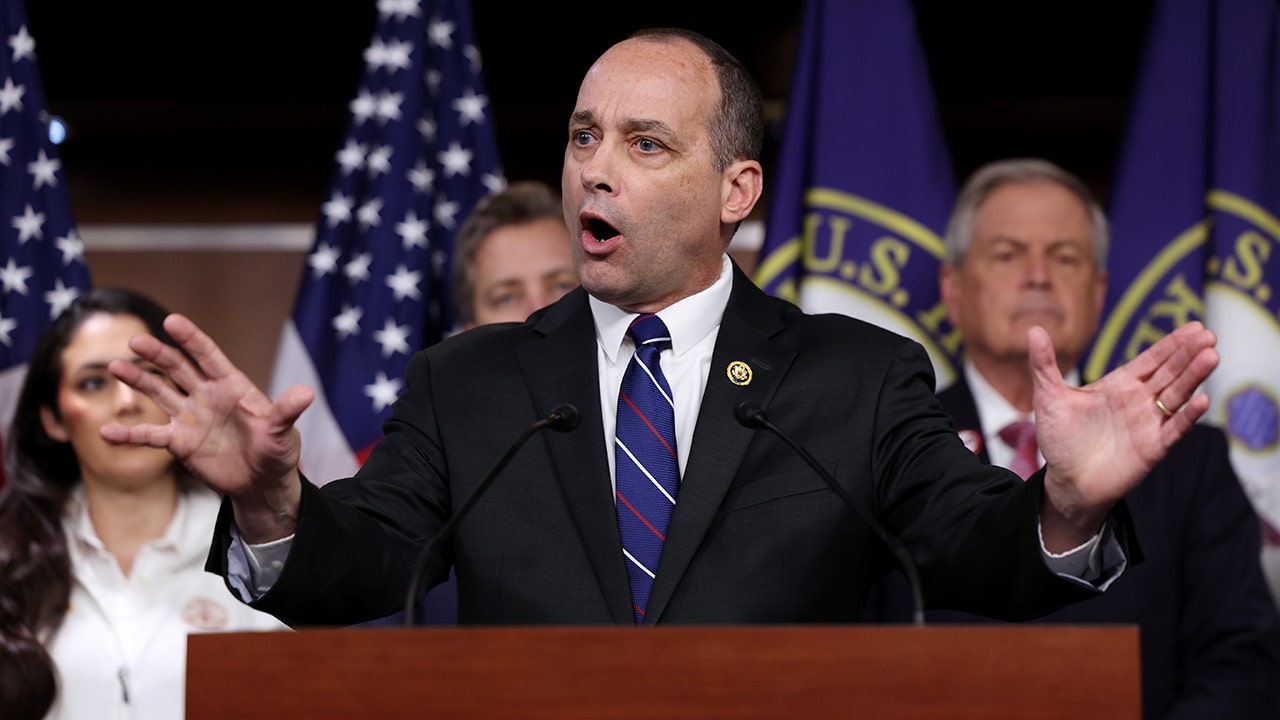Oregon
Oregon agency sets virtual public hearings Aug. 4 on 2024 requested health insurance rates – KTVZ

SALEM, Ore. (KTVZ) – The virtual public hearings for the 2024 requested rates for individual and small group health insurance plans has been rescheduled for August, the Oregon Department of Consumer and Business Services announced Wednesday.
The hearings are now set for Friday, Aug. 4, from 8:30 to 11:30 a.m. and 1 to 4 p.m.
In the meantime, Oregon consumers can look at the requested rates for 2024 and proposed plan coverage by county at https://dfr.oregon.gov/healthrates/Documents/2024-rate-and-county-coverage.pdf.
In the individual market, six companies submitted rate change requests ranging from an average 3.5 percent to 8.5 percent increase, for a weighted average increase of 6.2 percent. That average increase is slightly lower than last year’s requested weighted average increase of 6.7 percent.
In the small group market, eight companies submitted rate change requests ranging from an average 0.8 percent to 12.4 percent increase, for a weighted average increase of 8.1 percent, which is higher than last year’s requested 6.9 percent average increase.
The Oregon Reinsurance Program continues to help stabilize the market and lower rates. Reinsurance lowered rates by at least 6 percent for the sixth straight year.
A web address to watch the public hearings will be posted at oregonhealthrates.org. At the hearings, each insurance company will provide a brief presentation about its rate increase requests, answer questions from Division of Financial Regulation (DFR) staff, and hear public comment from Oregonians. The public also has the opportunity to comment on the proposed rates through Aug. 3 at oregonhealthrates.org.
The requested rates are for plans that comply with the Affordable Care Act for small businesses and individuals who buy their own coverage rather than getting it through an employer. For the second year in a row, every county has at least four companies available for people to buy insurance on the individual market. Deschutes County, which has four companies in 2023, is proposed to have five in 2024.
The division is analyzing the requested rates to ensure they adequately cover Oregonians’ health care costs. DFR must review and approve rates before they are charged to policyholders.
Preliminary decisions are expected to be announced in late July, and final decisions will be made in August after the public hearings and comment period ends. The hearings were previously scheduled for July 17-18.
###
About Oregon DFR: The Division of Financial Regulation is part of the Department of Consumer and Business Services, Oregon’s largest business regulatory and consumer protection agency. Visit dfr.oregon.gov and www.dcbs.oregon.gov.

Oregon
Oregon Doctors Could Soon Lose Their Licenses for ‘Microaggressions’ Under Proposed Medical Board Rule
“America is the land of opportunity.” “I believe the most qualified person should get the job.” “America is a melting pot.” Those are examples of harmful “microaggressions,” according to Columbia professor Derald Wing Sue, lauded by Oregon’s state government as a “microaggressions expert.”
Now, under a soon-to-be-finalized ethics rule from the Oregon Medical Board, doctors who commit “microaggressions” risk losing their medical licenses.
Under Oregon law, doctors who fail to report “unprofessional conduct” from themselves or a colleague within 10 business days can face severe penalties, including loss of license. The state’s medical board is in the process of shoehorning “microaggressions”—innocently intentioned behaviors interpreted by women or minorities to be subliminal communications of bias—into its definition of “unprofessional conduct,” according to the proposed rule, which the board unveiled in April.
The rule, which has thus far flown under the media radar, expands that definition to include “discrimination through unfair treatment characterized by implicit and explicit bias, including microaggressions, or indirect or subtle behaviors that reflect negative attitudes or beliefs about a non-majority group.” Discrimination, the rule states, is defined as “differences in the quality of healthcare delivered that is not due to access-related factors or clinical needs, preferences, and appropriateness or intervention.”
The proposed crackdown on microaggressions, a concept that germinated at elite Ivy League universities and has since spread to the legal and medical fields, marks the latest example of medical institutions infusing left-wing cultural trends into their work.
At the University of California, Los Angeles medical school, for example, a mandatory “health equity” class taught future doctors that weight loss is a “hopeless endeavor” and featured a guest speaker who led students in chants of “Free, Free Palestine” and demanded they bow to “mama earth,” the Washington Free Beacon reported. UCLA launched a probe into the class in April.
For Dr. Stanley Goldfarb, a former University of Pennsylvania School of Medicine associate dean who leads the anti-woke medical group Do No Harm, Oregon’s bid to make microaggressions a potential career-ending offense will have a chilling effect on doctors.
“Physicians need to be able to speak frankly and honestly with their patients,” said Goldfarb, the father of Free Beacon chairman Michael Goldfarb. “If they believe that they can be sanctioned because they deliver bad news or make a comment that the patient misinterprets, this will lead to a chilling effect on speech and ultimately lead to deterioration in the patient-physician relationship.”
Such a deterioration means “going down a path that will lead to even further declines in the quality of delivered health care,” Goldfarb added. “I cannot imagine that the physicians in Oregon will be able to tolerate such a ridiculous proposal.”
Oregon Medical Board policy analyst Elizabeth Ross said the board will consider permanently adopting the proposed microaggression rule during a July 11 meeting. The proposal says that rule “may favorably impact racial equity by making discrimination a ground for discipline for OMB licensees” and could prompt “additional board investigations” given the creation of a “new ground for ‘unprofessional conduct.’”
Still, Ross downplayed the rule’s potential effect, saying the board “does not expect this rule to change the way physicians, PAs, or acupuncturists practice because discrimination in the practice of medicine/acupuncture is already considered unethical and prohibited by federal laws and facility bylaws.”
“The board reviews complaints when they are received, and each complaint is reviewed for its unique circumstances on a case-by-case basis,” Ross told the Free Beacon. “If a complaint asserted microaggressions, the Board would review the evidence and facts gathered to determine whether the physician, PA, or acupuncturist was unprofessional in their practice of medicine/acupuncture.”
It’s unclear how exactly the board would define a microaggression or review a microaggression-related complaint—the proposed rule does not provide examples. Oregon’s government has, however, pointed to examples of microaggressions before.
In its 2021 “DEI Action Plan,” for example, the Oregon Department of Administrative Services said posing the question, “How did you get your job?” to a minority constitutes a “racial microaggression.”
The Oregon Department of Transportation’s “Social Equity Foundations” series, meanwhile, cites Sue, the Columbia professor, as a “well-known scholar on microaggressions” and a “microaggression effort.” The series adopts Sue’s three categories of microaggressions: “microassault,” “microinsult,” and “microinvalidation.” It also lists the statement, “Everyone can succeed if they just work hard enough!” as an example of a microaggression.
Sue’s book, Microaggressions in Everyday Life: Race, Gender, and Sexual Orientation, is considered one of the definitive texts in microaggression scholarship. One microaggression example listed in the book is the statement, “There is only one race, the human race.”
The adoption of the Oregon Medical Board’s microaggression rule would fulfill a goal identified in the board’s own “DEI Action Plan.” That plan, released in 2023, calls to add “a new definition for unprofessional conduct that includes ‘discrimination in the practice of medicine/acupuncture.’” It goes on to list disciplinary statutes that deal with “grounds for suspending, revoking or refusing to grant license, registration, or certification.”
The Oregon statute under which microaggressions would now be penalized defines “unprofessional conduct” as things like “willful performance of any surgical or medical treatment which is contrary to acceptable medical standards” and “willful and repeated ordering or performance of unnecessary laboratory tests or radiologic studies.” Other examples of “unprofessional conduct” include possessing child pornography and masturbating in front of patients.
Oregon
Oregon kids are healthy but lag behind in education, according to new report • YachatsNews.com
By ALEX BAUMHARDT/Oregon Capital Chronicle
Oregon kids are healthier than average but lag their peers nationwide when it comes to education, according to a new report.
The Baltimore-based Annie E. Casey Foundation releases annually a report called Kids Count that ranks how well states support kids using state and federal data. The latest report, the foundation’s 35th, was released last week and includes data collected in 2021 and 2022. It shows Oregon is in the middle among states for overall child well-being.
Although Oregon is in the top 25% of states for supporting child health – as measured by health insurance coverage, birth weight, childhood death and obesity rates – the state ranks near the bottom in education, at 43rd among the 50 states.
In Oregon, nearly three-quarters of 4th graders were not considered proficient readers in 2022, up 6% from pre-COVID pandemic levels in 2019, according to the report. Nearly 80% of 8th graders were not considered proficient in math, a 10% increase from pre-pandemic levels in 2019.
The pandemic also drove a 10% increase in chronic absenteeism since 2020. According to the report, about 40% of Oregon students were chronically absent in 2022, meaning they missed 10%, or 16 or more days, of school during the year.
Declining proficiency in key subject areas and increases in student absenteeism are troubling trends in most states, researchers found.
“This lack of readiness will result in major harm to the nation’s economy and to our youth as they join the workforce. Up to $31 trillion in U.S. economic activity hinges on helping young people overcome learning loss caused by the pandemic,” a news release from the foundation read.
Oregon Department of Education Director Charlene Williams said she and the agency are focused on improving outcomes for students and schools still feeling the impacts of the pandemic.
“The data clearly shows that this is still a challenge. We’re in an important moment where we have to get really clear about our existing resources, how do we strategically invest and maximize what we have, and any additional resources to accelerate the lift in our scholars’ learning and achievement,” she said in an email.
Researchers pointed to unreliable transportation, unstable housing, food insecurity, large class sizes and decaying school infrastructure in Oregon as issues that exacerbate learning and school attendance issues.
Other challenges include low-economic prosperity in the state. Oregon ranked 29th among states for economic well-being. This is because 14% of kids live in poverty and 30% of kids live in households with a high housing cost burden.
The report recommended increased investment from the state Legislature and schools to ensure universal and reliable internet access, as well as low-cost or free meals and staff and space for students to get help with studying and tutoring at school. Authors criticized Oregon schools and the Oregon Department of Education for not more closely regulating and ensuring $1.6 billion in federal COVID relief money was used to improve educational outcomes for kids. Schools have spent nearly all of the money.
“This disheartening fact ties to Oregon’s overall lack of oversight and accountability for data driven results in how the 197 school districts chose to utilize this vital resource,” they wrote.
- Oregon Capital Chronicle is a nonprofit Salem-based news service that focuses its reporting on Oregon state government, politics and policy.
Oregon
Oregon ranks middle among states for child well-being in new report

FILE – Students sitting inside a classroom at David Douglas High School in Portland on Sept. 6, 2023. A new report Oregon ranks middle among states for child well-being.
Caden Perry / OPB
Oregon kids are healthier than average but lag behind their peers nationwide when it comes to education, according to a new report.
The Baltimore-based Annie E. Casey Foundation releases annually a report called KIDS COUNT that ranks how well states support kids using state and federal data. The latest report, the foundation’s 35th, was released last week and includes data collected in 2021 and 2022. It shows Oregon is in the middle among states for overall child well-being.
Although Oregon is in the top 25% of states for supporting child health — as measured by health insurance coverage, birth weight, childhood death and obesity rates — the state ranks near the bottom in education, at 43rd among the 50 states.
In Oregon, nearly three-quarters of fourth graders were not considered proficient readers in 2022, up 6% from pre-COVID pandemic levels in 2019, according to the report. Nearly 80% of eighth graders were not considered proficient in math, a 10% increase from pre-pandemic levels in 2019.
The pandemic also drove a 10% increase in chronic absenteeism since 2020. According to the report, about 40% of Oregon students were chronically absent in 2022, meaning they missed 10%, or 16 or more days, of school during the year.
Declining proficiency in key subject areas and increases in student absenteeism are troubling trends in most states, researchers found.
“This lack of readiness will result in major harm to the nation’s economy and to our youth as they join the workforce. Up to $31 trillion in U.S. economic activity hinges on helping young people overcome learning loss caused by the pandemic,” a news release from the foundation read.
Oregon Department of Education Director Charlene Williams said she and the agency are focused on improving outcomes for students and schools still feeling the impacts of the pandemic.
“The data clearly shows that this is still a challenge. We’re in an important moment where we have to get really clear about our existing resources, how do we strategically invest and maximize what we have, and any additional resources to accelerate the lift in our scholars’ learning and achievement,” she said in an email.
Researchers pointed to unreliable transportation, unstable housing, food insecurity, large class sizes and decaying school infrastructure in Oregon as issues that exacerbate learning and school attendance issues.
Other challenges include low-economic prosperity in the state. Oregon ranked 29th among states for economic well-being. This is because 14% of kids live in poverty and 30% of kids live in households with a high housing cost burden.
The report recommended increased investment from the state Legislature and schools to ensure universal and reliable internet access, as well as low-cost or free meals and staff and space for students to get help with studying and tutoring at school. Authors criticized Oregon schools and the Oregon Department of Education for not more closely regulating and ensuring $1.6 billion in federal COVID relief money was used to improve educational outcomes for kids. Schools have spent nearly all of the money.
“This disheartening fact ties to Oregon’s overall lack of oversight and accountability for data driven results in how the 197 school districts chose to utilize this vital resource,” they wrote.
-

 Movie Reviews1 week ago
Movie Reviews1 week ago‘Darkest Miriam’ Review: Britt Lower in a Marvel of a Drama About a Young Librarian’s Loves and Fears
-

 Politics1 week ago
Politics1 week agoGun group vows to 'defend' Trump's concealed carry license after conviction
-

 Politics1 week ago
Politics1 week agoShould Trump have confidence in his lawyers? Legal experts weigh in
-

 Politics1 week ago
Politics1 week agoGOP releases Jan. 6 clip of Pelosi saying 'I take responsibility' as she discussed National Guard absence
-

 World1 week ago
World1 week agoOrban party loses major support in Hungary's EU election
-

 World1 week ago
World1 week agoUkraine reconstruction official quits citing ‘systemic obstacles’
-

 World1 week ago
World1 week agoJury deliberations start in Hunter Biden’s gun trial
-
World1 week ago
German chancellor Olaf Scholz heckled by pro-Palestinian protesters at SPD rally















